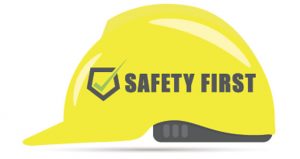 Following the Grenfell tragedy, there is an identified need to improve building safety performance by focusing upon improving the competence, and the behaviour, of the workforce at all levels. International Workplace’s Kelly Mansfield addresses what competence means and how it is attained
Following the Grenfell tragedy, there is an identified need to improve building safety performance by focusing upon improving the competence, and the behaviour, of the workforce at all levels. International Workplace’s Kelly Mansfield addresses what competence means and how it is attained
The Building Safety Bill was published on 5 July, introducing the role of the Building Safety Manager (BSM). The role has been designed to look after the day-to-day management of fire and structural safety in higher-risk buildings and establish a clear point of contact for residents for fire and safety-related issues.
Earlier this year, the government decided to remove originally planned statutory duties from the BSM, while still introducing the BSM as a statutory role, to carry out such duties relating to planning, managing, and monitoring functions as may be specified in the appointment. What remains is that the Building Safety Manager, appointed by the Accountable Person, must be competent.
A COMPETENCE FRAMEWORK
To encourage industry to prepare now for the new BSM role, the government has endorsed the BSM competence framework developed by Working Group 8 (WG8), published in its final report Safer people, safer homes: Building Safety Management.
WG8, set up as one of the working groups within the CIC’s Competence Steering Group, are working with BSI to deliver the PAS 8673, a standard for the competence of individual BSMs and Nominated Individuals (NIs) appointed by the organisation, which is due to be published in early 2022.
Speaking to International Workplace, Anthony Taylor, Chairman of WG8, said: “Dame Judith [leader of the Grenfell Inquiry] recognised the lack of competence across the whole industry. Competence is redefined as SKEB – skills, knowledge, experience and behaviour – the last being the truly new issue. After all, you can have all the technical knowledge in the world, but if applied in a slapdash manner, it accounts for nothing.”
Dame Judith Hackitt said: “If you move to a future world where the regulator is going to say, ‘prove to me that this is going to be a safe building’ – the question they will ask is ‘how will you ensure that this is the case?’ The Duty Holder, whether that’s the client, the major contractor, whoever it is, will need to be in a position to say ‘because I am employing competent people to do this job, and here is the evidence that I am employing competent people to do this job’. There is no doubt at all that competence and accreditation is going to be a major feature of the future.”
CERTIFICATION AND REGISTRATION OF BSMS
As well as developing a standard, WG8 has also gone on to form the Building Safety Alliance – some 40+ members from across this sector, including insurers, social and private housing, and some commercial organisations working in fire risk management. It will sit within the Construction Industry Council (CIC) ‘umbrella’ of similar organisations, with the initial intent of undertaking independent assessments and certification of prospective BSMs and nominated individuals.
It is envisioned that those who are successfully certificated ‘against’ PAS 8673 will then be placed on a national Register, operated and governed by the Building Safety Alliance. This is intended to be the pre-eminent source of assurance to residents, APs, BSM organisations, the Regulator and others, that those on the Register are competent to operate as BSM/NIs.
WHAT MAKES A BSM COMPETENT?
Competence requirements of individuals in these roles are necessarily wide and they will be defined by the PAS 8763.
“The appropriate SKEB – skills, knowledge, experience and behaviour – are what make someone competent,” says Taylor. “The new bit there is behaviour. Because, quite frankly, if you’ve got all the skills in the world and you don’t have the integrity to do the job properly, that’s not worth a lot! The whole cultural change that’s being pushed through the built environment is centred on improving people’s behaviour and integrity, albeit we also need to drive up the general skillsets too.”
Taylor continues: “Basically, the Building Safety Bill requires that you need knowledge about spread of fire, and knowledge about structures of the building. The PAS will extend this narrow legal focus to include knowledge about all existing health and safety law, public health, knowledge of how to understand PPM (planned preventative maintenance schedule) and generally operate a building safely.
“Because BSMs can’t be full-blown experts in everything set out in the PAS, they will need to have adequate overall competence.
“It is envisaged that the Building Safety Alliance will take PAS 8673 and set a process in place that will, initially, encourage potential BSM/NIs to self-assess their competences against the PAS, go away to fill any gaps, perhaps with existing training providers, return to the Alliance to be formally assessed, and, if certificated, placed on the National Register (held by the Alliance).
“We are working on a ‘driving licence’ style graduation of competence to provide a starting point and career path, with the graduations relating to the complexity of the buildings for which the individuals will be competent to manage.”
COMPETENCY AND TYPES OF BUILDING
The competence level required of a BSM depends on the complexity of the building. Taylor explains: “The differences are, for example, a standard block, let’s say 10 flats of a non-complex building, compared to the Shard! That’s got to be different. And it depends on the demography of the residents – are they students, or more elderly, or perhaps infirm people? Is English not their first language? How you manage communication is a key competence skill.”
MAINTAINING COMPETENCE
Assessment of competence is ongoing. How and when is currently undecided but it will potentially be re-evaluated every three years and those on the Register will be required to undertake (and evidence) appropriate CPD.
When asked where roles such as facilities managers fit in with the developments, Taylor said they could upskill to become BSMs: “We are anticipating people putting themselves forward from many existing disciplines, engineers for example, property management or perhaps from a ‘fire safety’ background or from construction.
 “Technical knowledge will provide part of the route, but there will be no magical ‘course’ as such, as we will still have to judge on experience and behaviour.”
“Technical knowledge will provide part of the route, but there will be no magical ‘course’ as such, as we will still have to judge on experience and behaviour.”




